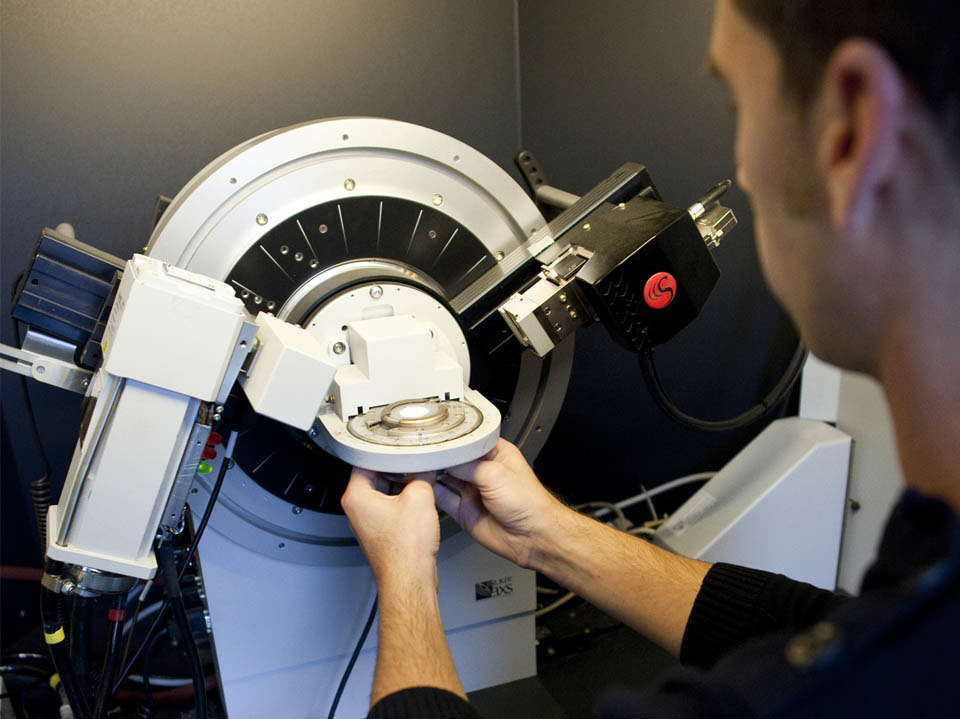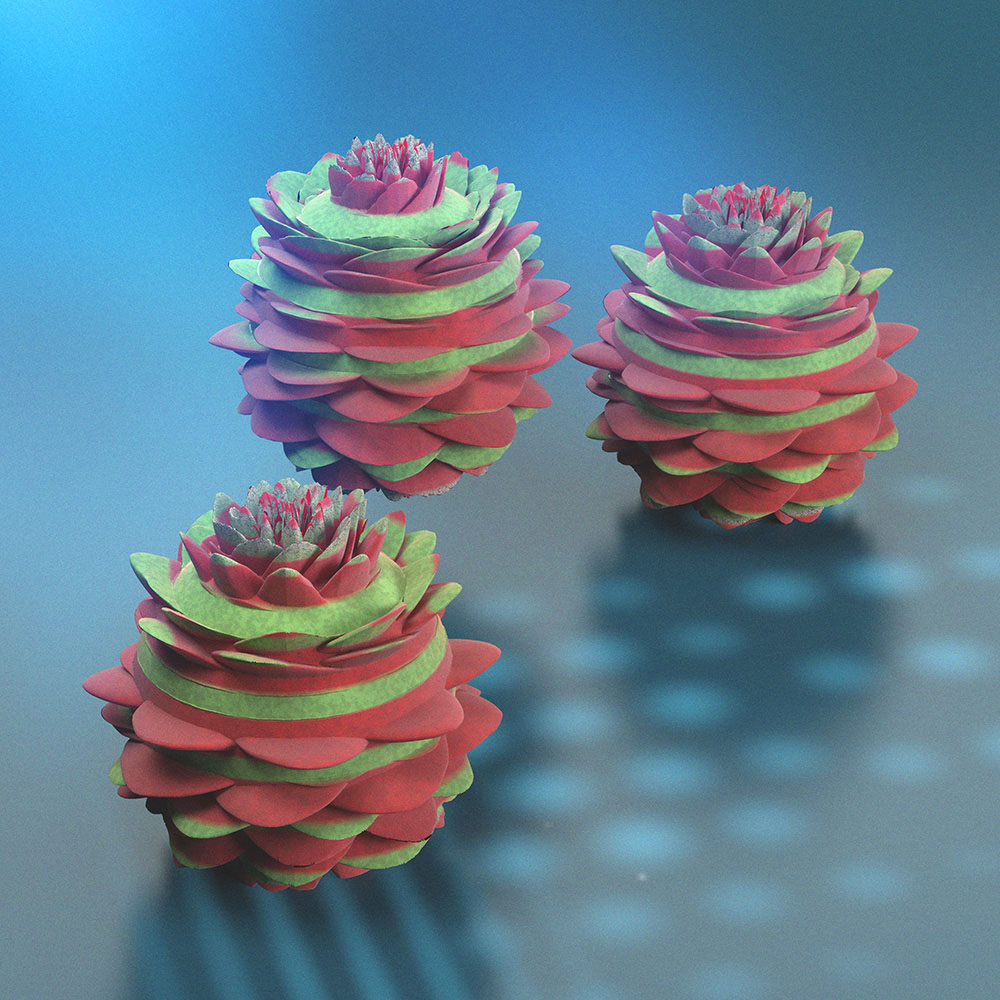Crystallography and reciprocal lattice
Crystallography techniques enable us to measure the arrangement of atoms inside matter.
In crystals, atoms are organized in a periodic array, with a pattern repeating itself over and over again. In order to determine how they are organized, we simply have to use X-rays. The diffracted beam will form what we call a reciprocal lattice, which helps us determine the arrangement of atoms. X-rays are necessary to observe things at the atomic level. Modern techniques of crystallography may also be applied to disordered situations such as liquids or biological objects. There again, we can determine the atom arrangement thanks to diffraction measurement.

In laboratory
Researchers use X-ray crystallography in the lab in order to better understand the way matter is organized at the atomic level. The structures of new materials are then solved, whether they are well-organized crystalline solids, or ‘soft’ matter, either liquid or biological.

